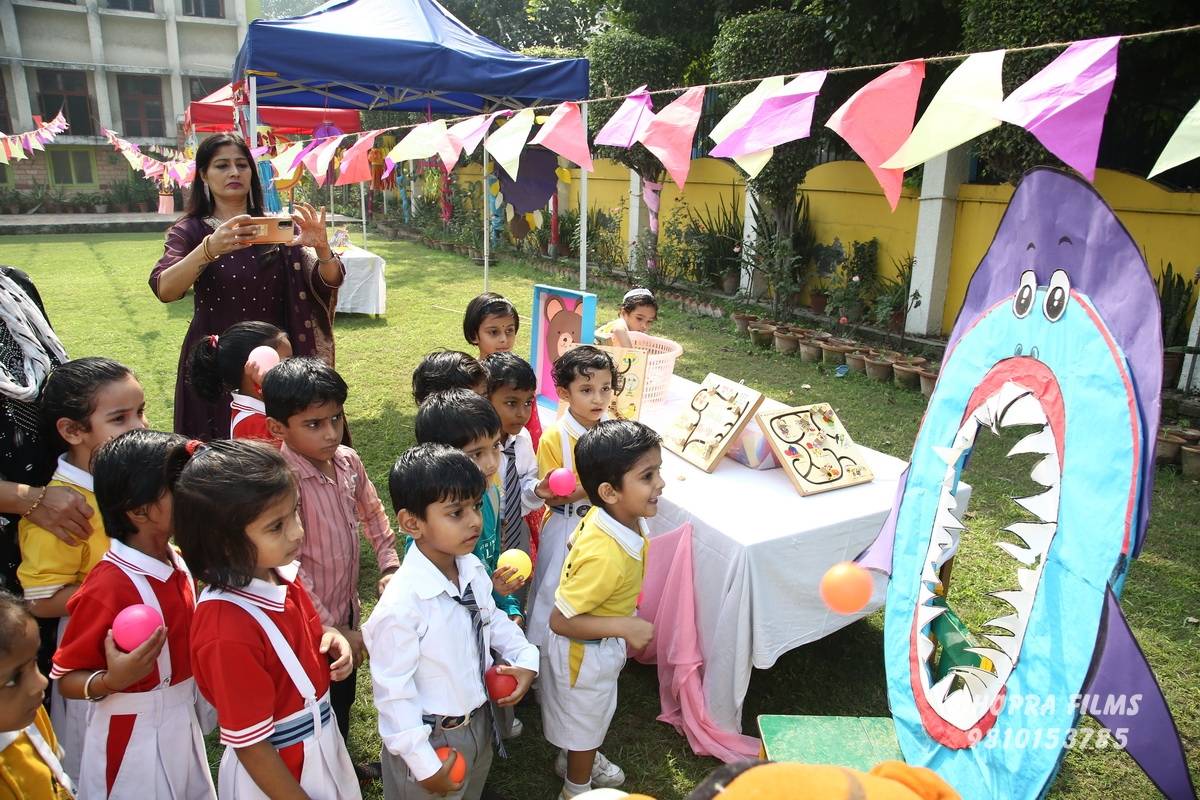The preschool years lay the foundations for the school-based learning to come. Goals during this time period include:
- Fine motor skills — cutting safely with scissors, pencil grasp, coloring, letter/number formation
- Self-regulation — listening attentively for longer periods of time, sitting still for longer periods of time
- Emotion regulation — healthy separation, self-soothing, frustration tolerance
- Social development — empathy, turn-taking, sharing, conflict resolution
- Early academic skills — letter identification, letter-sound associations, number identification, counting, basic concepts (shapes, colors, textures), conventions of print
- Activities of daily living/independence — putting on and taking off jacket, managing personal belongings
- Creativity and imaginary play — using an object in novel ways, sharing imagination
- Self-confidence as a learner
The preschool years lay the foundations for the school-based learning to come. Goals during this time period include:
How 3-5-year-olds learn
Learning during this period takes place almost effortlessly as children interact with responsive caregivers, explore the environment around them, and play. The human brain was built to learn, and children at this age are strengthening neural connections as they use them.
The experiences and activities that you provide your child literally build their brain and increase their learning efficiency and capacity. Present your preschool student with a language-rich environment, a variety of sensory-rich stimulation, and allow them hands-on opportunities to explore basic concepts (such as shape, color and texture) and the environment.
What’s the parent’s role?
While preschoolers are capable of independent play for brief periods of time, parents will need to organize their child’s day, set up structured tasks, help with transitions between activities, and provide scaffolding and encouragement.
- Create structure. Just like adults, children need predictability in their days. Moreover, consistency and routine help children to develop and learn. Through repetitive routines (for example, bath time) children learn about sequencing (what comes first, next, last), build vocabulary and concept knowledge (for instance, wet, slippery, faucet, drain), and develop autonomy (getting their own towel or cleaning up bath toys on their own).
- Check in with teachers. If your child’s preschool teacher is available, it might be helpful to schedule some time to check in and discuss suggestions for specific activities. If your student receives additional services, try to touch base with providers to see if they can suggest ways you can help continue with treatment and maintain gains at home.
- Talk to your child. Nearly any activity that a preschooler is engaged in provides an opportunity to talk, introducing new vocabulary as well as shapes, colors, size, and numbers. “Serve-and-return” interactions, or the back-and-forth, reciprocal verbal and non-verbal exchange that takes place between a child and their caregiver, also facilitate attachment and a sense of self.
- Present projects. Projects, which can include coloring, building, sorting or sensory play (such as a water table or sand play) are great opportunities for your child to experience your undivided attention, which helps reinforce the sense that they matter. Commenting, reflecting upon and complimenting your child’s work gives them a sense of accomplishment and self-esteem, and praising your child’s effort helps with the development of grit.
- Prompt unstructured play. Independent play is very important for fostering creativity, problem-solving and autonomy. Offer your preschool student a variety of art materials (crayons, markers, chalk, finger paints), building materials (blocks, Magna-Tiles, Legos) or imaginary play props and allow them to construct their own craft or play. If they run out of ideas or materials, offer a new material and see if they can shift on their own to a new way of playing.
How to structure the day :
- Wake up at the same time, change from pajamas into “real clothes” (whatever that may mean for you) and eat breakfast at the normal time.
- Alternate different types of play throughout the day.
- Incorporate regular breaks into the schedule, which should include opportunities for exercise and free play.
- Have dinner together as a family and use that time as an opportunity to discuss the day and problem-solve together.
Types of play that support learning in children 3-5
When considering how to fill your child’s day, it is helpful to consider the different types of play that help to support different areas of their development:
- Constructive Play: blocks, Magna-Tiles, Legos, fort-building, coloring and crafts
- Physical Play: running, skipping, hide and seek, Simon Says, freeze dance
- Pretend Play: dress-up, dolls, kitchen, action figures, modified “charades” (for example, have your child act like an animal and you guess what they are)
- Sensory Play: sand table, water play, finger painting, play dough, baking bread
- Music Play: listening to music and nursery rhymes, playing musical instruments, singing
- Outdoor Play: nature walk, picking flowers, “I spy” outside
- Story time: read aloud and quiet time with books
How to build independence in preschoolers
- Structure the day. Just like adults, when children can anticipate their day, they are better equipped to take on responsibilities.
- Start small. Before going outside, for example, your child may put on their own hat and get their shoes from the closet.
- Let your child choose. Involve them in choices, like what to wear. This does not have to mean they have free rein. Provide 2-3 options, and then praise their great ability to make a choice!
- Let your child help. Children love to help! When you allow your child to help, even if it takes you longer to get things done, you foster their confidence and give them an opportunity to learn something new.
- Let your child solve problems. Allow your children to try things that are hard and to solve (small) problems on their own. Wait until they ask for help or assist only in getting them to the next step in a task. You can acknowledge that something is hard and let them know that you are proud by offering praise for trying something on their own, or for the first time.
- Give your child chores. Simple tasks like picking up toys or putting laundry in the basket allow your child to have reasonable responsibility, and those tasks also help with maintaining routine and structure throughout the day.

